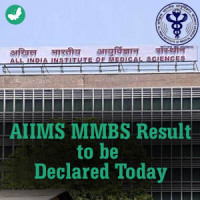This year, the All India Pre Medical Test is scheduled to be held on 3rd May 2015. Organised by the Central Board for Secondary Education, Delhi, the examination is conducted for the merit positions in some of the most prestigious medical and dental colleges in India. The conduction of the test, declaring results and releasing merit lists and counselling of eligible students is taken care of by CBSE.
The subjects included in the AIPMT 2015 syllabus are Physics, Chemistry and Biology. Biology is divided into Botany and Zoology. Candidates are expected to attempt 180 objective, multiple choice questions from these subjects.
Experts at Meritnation.com studied and analysed AIPMT Question Papers papers from exams held in the last 10 years and assembled a list of some of the toughest questions ever asked. So go through the following questions to strengthen your preparation for AIPMT 2015!
Question 1 (AIPMT 2012): Monascus purpureus is a yeast used commercially in the production of:
| Option A | Option B | Option C | Option D |
| Ethanol | Streptokinase for removing clots from the blood vessels | Citric acid | Blood cholesterol lowering statins |
Correct Answer: Option D
Monascus purpureus is a yeast used in the production of statins which are blood cholesterol lowering agent.
————————————————————————————————————————————————————————————————–
Question 2 (AIPMT 2011): the purplish red pigment rhodopsin contained in the rods type of photoreceptor Cells of the human eye, is a derivative of:
| Option A | Option B | Option C | Option D |
| Vitamin A | Vitamin B1 | Vitamin C | Vitamin D |
Correct Answer: Option A
Vitamin A is the precursor of the purplish red pigment rhodopsin contained in the rods (photoreceptor) cells of human eye.
————————————————————————————————————————————————————————————————–
Question 3 (AIPMT 2010): Which one of the following palindromic base sequences in DNA can be easily cut at about the middle by some particular restriction enzyme?
| Option A | Option B | Option C | Option D |
| 5′ −−−−−− CGTTCG −−−−−− 3′ 3′ −−−−−− ATGGTA −−−−−− 5′ |
5′ −−−−−− GATATG −−−−−− 3′ 3′ −−−−−− CTACTA −−−−−− 5′ |
5′ −−−−−− GAATTC −−−−−− 3′ 3′ −−−−−− CTTAAG −−−−−− 5′ |
5′ −−−−−− CACGTA −−−−−− 3′ 3′ −−−−−− CTCAGT −−−−−− 5′ |
Correct Answer: Option C
Because the palindrome in DNA is a sequence of base pairs that reads same on the two strands when orientation of reading is kept same.
————————————————————————————————————————————————————————————————–
Question 4 (AIPMT 2009): Oxygenic photosynthesis occurs in:
| Option A | Option B | Option C | Option D |
| Oscillatoria | Rhodospirillum | Chlorobium | Chromatium |
Correct Answer: Option A
Cyanobacteria are the only monerans capable of oxygenic photosunthesis and Oscillatoria is a cyanobacterium.
————————————————————————————————————————————————————————————————–
Question 5 (AIPMT 2014): Which of the following is a hormone releasing Intra Uterine Device (IUD)?
| Option A | Option B | Option C | Option D |
| Multiload 375 | LNG – 20 | Cervical cap | Vault |
Correct Answer: Option B
LNG-20 is a Long Term Reversible Contraceptive Device (LTRC) that helps in contraception without requiring any user action. It is a type of IUD that releases progesterone.
————————————————————————————————————————————————————————————————–
Share with your friends and compare how you fair against the toughest questions ever asked in AIPMT Biology.
Best of luck for AIPMT 2015 on 3rd May!

 AIIMS MBBS Results To Be Declared Today
AIIMS MBBS Results To Be Declared Today Dates for Rankers Test Series are out!
Dates for Rankers Test Series are out! AIPMT 2015: Supreme Court asks 875 seats to be reverted to states
AIPMT 2015: Supreme Court asks 875 seats to be reverted to states
good